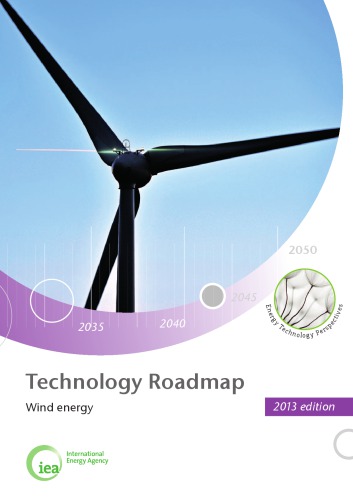

Most ebook files are in PDF format, so you can easily read them using various software such as Foxit Reader or directly on the Google Chrome browser.
Some ebook files are released by publishers in other formats such as .awz, .mobi, .epub, .fb2, etc. You may need to install specific software to read these formats on mobile/PC, such as Calibre.
Please read the tutorial at this link. https://ebooknice.com/page/post?id=faq
We offer FREE conversion to the popular formats you request; however, this may take some time. Therefore, right after payment, please email us, and we will try to provide the service as quickly as possible.
For some exceptional file formats or broken links (if any), please refrain from opening any disputes. Instead, email us first, and we will try to assist within a maximum of 6 hours.
EbookNice Team

Status:
Available4.7
39 reviews
ISBN-10 : 9264238832
ISBN-13 : 9789264238831
Author: OECD
Current trends in energy supply and use are unsustainable – economically, environmentally and socially. Without decisive action, energy-related greenhouse-gas (GHG) emissions would lead to considerable climate degradation with an average 6°C global warming. We can and must change the path we are now on; sustainable and low-carbon energy technologies will play a crucial role in the energy revolution required to make this change happen. Energy Efficiency, many types of renewable energy, carbon capture and storage (CCS), nuclear power and new transport technologies will all require widespread deployment if we are to achieve a global energy-related CO2 target in 2050 of 50% below current levels and limit global temperature rise by 2050 to 2°C above pre-industrial levels.
Wind is the most advanced of the "new" renewable energy technologies and was the subject of one of the first roadmaps produced by the IEA, in 2009. Since then, the development and deployment of wind power has been a rare good news story in the deployment of low-carbon technology deployment.
Figure 1. Global cumulative growth of wind power capacity 9
Figure 2. Global wind map, installed capacity and production for lead countries 11
Figure 3. Capacity factors of selected turbine types 12
Figure 4. Evolution of forecasting errors since 2008 13
Figure 5. Cost trend of land-based wind turbine prices, by contract date 14
Figure 6. Capital costs of European offshore wind farms, by year (EUR/W) 15
Figure 7. Recent trends in average price for full-service O&M contracts (EUR/MW/yr) 16
Figure 8. Estimated change in the LCOE between low- and high-wind-speed sites 17
Figure 9. Global electricity mix by 2050 in the 2DS and hiRen scenario 20
Figure 10. Regional production of wind electricity in the 2DS and hiRen 21
Figure 11. Additional CO2 emissions reduction in 2050 by region in the 2DS and hiRen (over the 6DS) 21
Figure 12. Wind electricity production in the hiRen versus industry scenarios 22
Figure 13. 2DS projections for investment costs of wind turbines 23
Figure 14. Growth in size of wind turbines since 1980 and prospects 27
Figure 15. Target for cost reductions of land-based wind power in the United States 28
Figure 16. Cost-reduction potential of offshore wind power plants, United Kingdom 30
Figure 17. Fixed-bottom foundation and floating offshore concepts 31
Figure 18. Bottlenecks in the European electricity network 37
Figure 19. China’s West-East electricity transfer project 39
Figure 20. From radial to fully meshed options for offshore grid development 40
Figure 21. OECD member country funding for wind energy R&D and share of energy R&D
technology of wind energy
technology roadmaps wind energy
technology roadmaps examples
technology development roadmap
wind energy technology program
Tags: Technology, roadmap, wind energy, OECD